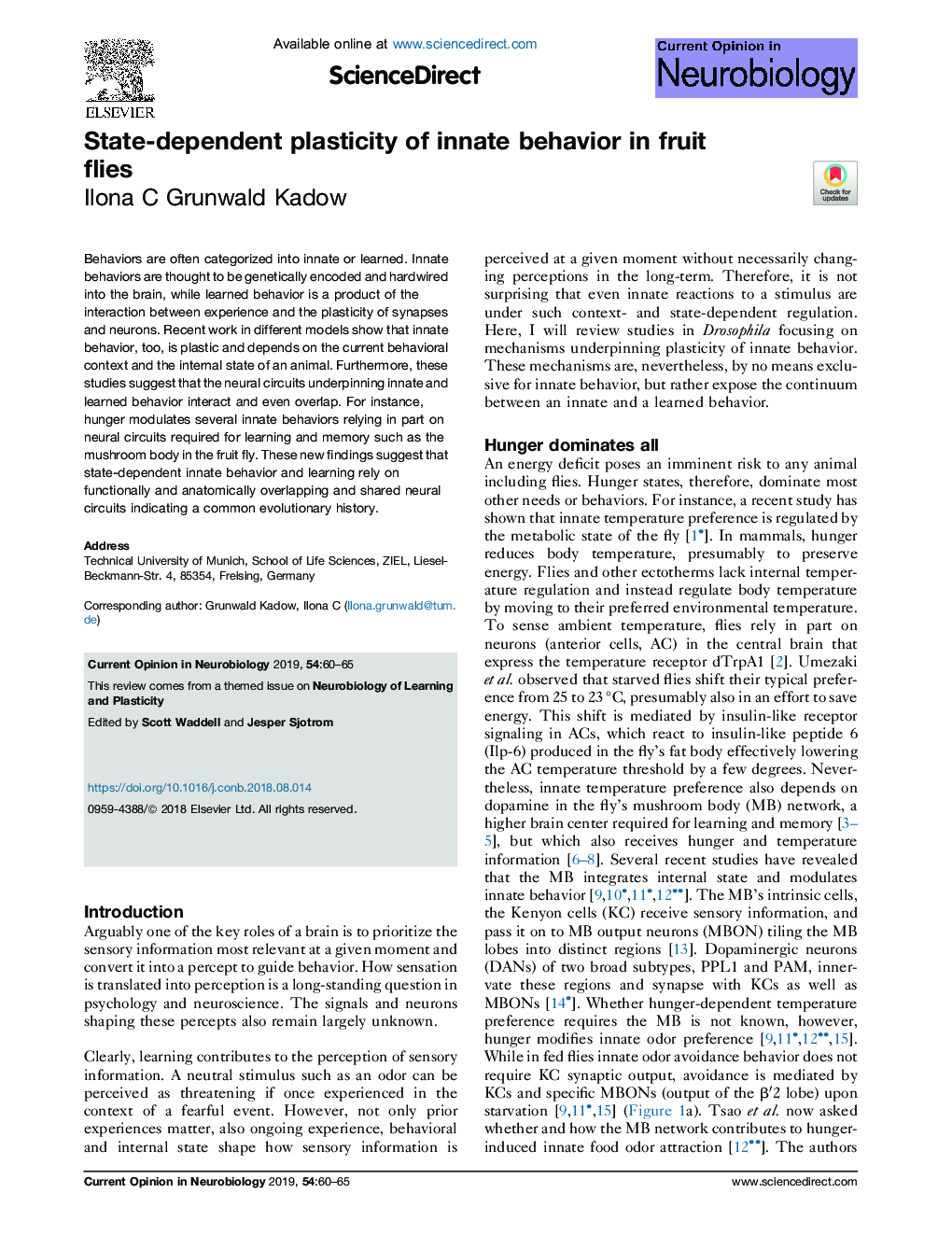| Article ID | Journal | Published Year | Pages | File Type |
|---|---|---|---|---|
| 10106924 | Current Opinion in Neurobiology | 2019 | 6 Pages |
Abstract
Behaviors are often categorized into innate or learned. Innate behaviors are thought to be genetically encoded and hardwired into the brain, while learned behavior is a product of the interaction between experience and the plasticity of synapses and neurons. Recent work in different models show that innate behavior, too, is plastic and depends on the current behavioral context and the internal state of an animal. Furthermore, these studies suggest that the neural circuits underpinning innate and learned behavior interact and even overlap. For instance, hunger modulates several innate behaviors relying in part on neural circuits required for learning and memory such as the mushroom body in the fruit fly. These new findings suggest that state-dependent innate behavior and learning rely on functionally and anatomically overlapping and shared neural circuits indicating a common evolutionary history.
Related Topics
Life Sciences
Neuroscience
Neuroscience (General)
Authors
Ilona C Grunwald Kadow,
